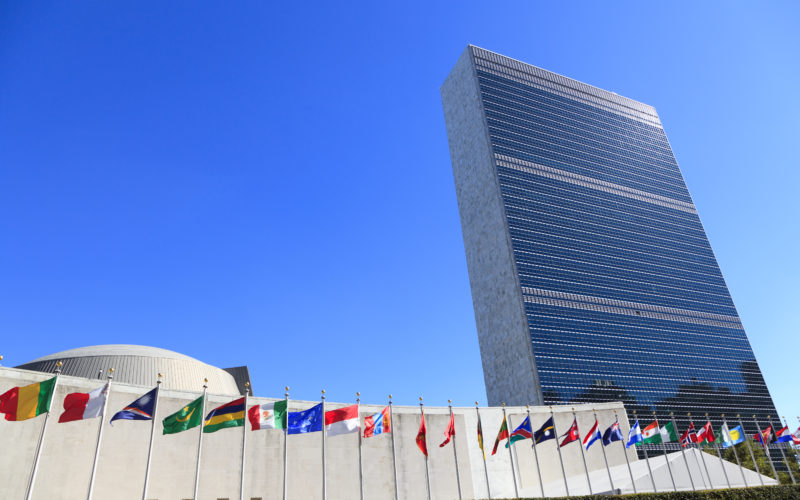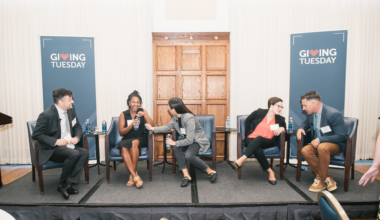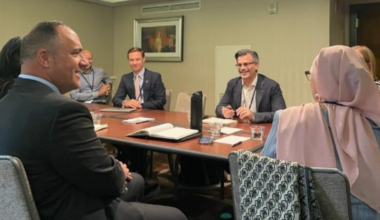When I checked in for my flight today, I had to do a reality check: but indeed this is my 17th United Nations General Assembly. Affectionately known as #UNGA, it is a week when the world comes together to dialogue and debate. New York City is host to it all. A city that is normally full of energy becomes hyper-charged with ideas and urgency. Not everybody loves the UN. And not everybody believes that a week like this (with various side meetings, convenings and events) can really make things happen. But if you’ve ever followed what happens during this week, you’ll know it’s probably one of the only places on the calendar and in the world where we the world’s to-do list gets put on the table. All around town, people are buzzing with a shared commitment to addressing the problems and challenges our world is facing. They don’t all agree (in fact they quite often don’t), but they are people who know that something’s got to be done if we are going to live in a better world.
Over the years, I’ve had the great fortune to be a part of this international party in a variety of different roles. I have been part of planning events. I’ve staffed bosses. I’ve written speeches. I’ve given speeches. I’ve seen some victories and more than my share of near-misses. But I’ve always met remarkable people, made lifelong connections, and learned so much about how, while we’re all different and unique, our challenges and triumphs, fears and hopes are shared.
This year, I’m in New York as part of activities around the Faith and Media Initiative, as this growing community debuts its preliminary work and some remarkable new research that will be revealed at the Concordia Annual Summit 2022. I’ll share more details about that data with you in the coming days. For now, I’ll just say that it affirms something I’ve known for a long time: that people want to see stories of faith in the media. More of them. And better representations. And by “people” I mean the readers, the journalists, the editors and advertisers and everybody in between. There is a hunger to see stories about something real like faith – more broadly portrayed and integrated into the news stories and content that fill our phones and televisions, our family conversations and our public discourse.
#UNGA and the Concordia Summit come at a particularly notable global moment. This coming week will see the laying to rest of one of the most influential monarchs in modern history. More specifically, the media will be filled with images of a traditional religious service held in honor of Queen Elizabeth. The streets will be filled with mourners, the talking heads commenting on the particulars of the day and the intentions surrounding it. Regardless of your involvement in religion, you cannot deny that this week is one in which the world’s attention will be fixed on a moment of religious rites.
While this will be a uniquely sad day for many and a historic day for all, the fact remains that experiences like this are a part of most people’s everyday lives. We attend weekly services (sometimes), we mourn those we’ve lost, we celebrate couples, we teach our children our traditions. And, for many if not most of us, our public and professional lives are informed by those experiences. A lot of life, in abbeys and villages, in quiet moments and public squares, involves faith.
So this year, at my 17th #UNGA, not only do I look forward to being with so many old and new friends from around the world, I will be thinking about how they gather in their communities back home to connect to something bigger than their individual selves. I will be listening for how people want to see themselves reflected in the media of the day – beyond the details of their title, their work, or even their public personality, but their whole person. Even their faith.
I understand that some of us consider themselves more faith-fueled in their public conversations or their daily lives than others. Others don’t ascribe to a faith at all. This is not the point. This is not about the promotion of faith, or a particular faith, nor is it a condemnation of the media–most outlets and journalists are deeply committed to helping us navigate this chaotic time we live in.
Rather, what I’ll be watching for (and talking about) this week is a reminder to everyone–faith leaders, media professionals and content providers, and those in the pews–that the more we know about each other, the more we see ourselves reflected in the stories that our told, the more complete the picture is of our society and the world, the less we will be divided.
So, albeit imperfect, here’s to gatherings that bring people around the table to talk about what matters. We might not always be united in our opinions, and we might not always feel like united nations, but it’s good to come together as united humans.


